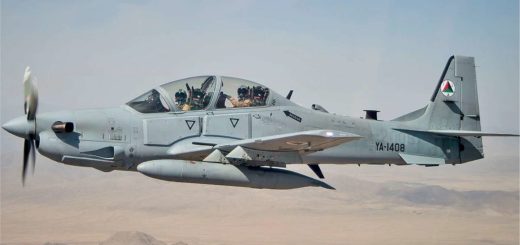Pentagon set to pick Navy’s next stealth fighter in Boeing-Northrop showdown
The Pentagon has reportedly approved plans for the US Navy’s next-generation carrier-based stealth fighter, paving the way for the service to select between Boeing and Northrop Grumman to develop the jet known as the F/A-XX. The new fighter will replace the Navy’s aging fleet of F/A-18E/F Super Hornets, which have been in service for decades.
Defense Secretary Pete Hegseth personally signed off on advancing the program last week, US officials told Reuters. The Navy could announce its choice of a program winner as soon as this week, marking the culmination of years of design work under the service’s Next Generation Air Dominance (NGAD) initiative.
The F/A-XX will be the Navy’s first clean-sheet fighter design in more than 30 years. It is intended to operate from aircraft carriers with stealth capability, longer range, and advanced networking technology that will allow it to carry out missions alongside uncrewed aircraft and sensors. The aircraft is seen as central to maintaining US air superiority in the Pacific amid China’s expanding military reach.
Boeing vs. Northrop
Boeing and Northrop Grumman are the only competitors still in the running, and both companies can make a strong case as to why the Navy should pick its design. Boeing’s proposal reportedly builds on its long experience producing carrier fighters, while Northrop’s concept, revealed in an August rendering, emphasizes a sleek, tailless design that echoes its earlier YF-23 stealth prototype.
The winning design will join the Navy’s broader NGAD family of systems, which will also include drones and new weapons. While details remain classified, the F/A-XX is expected to feature adaptive engines, open-architecture avionics, and the ability to share data with other platforms in real time.
Boeing’s advantage lies partly in its incumbent status. The company already builds the Super Hornet and EA-18G Growler at its St. Louis, Missouri, factory, and has the tooling and workforce in place to transition smoothly into F/A-XX production. Selecting Boeing would also help sustain the country’s fighter-aircraft industrial base, which the Pentagon has sought to preserve as Lockheed Martin dominates Air Force programs with the F-35.
Northrop Grumman, meanwhile, brings unmatched stealth and systems expertise. The company designed the B-2 Spirit and is producing the new B-21 Raider, both noted for their low observability. Its F/A-XX concept suggests a focus on deep-strike range and survivability, with a top-mounted air intake to reduce radar signature and an internal weapons bay to maintain stealth.
Politics and production
Industry analysts note that awarding the contract to Boeing would effectively rescue the company’s St. Louis fighter line, which faces a production gap after the Super Hornet procurement program ends in 2027. The Navy could see value in maintaining that capability rather than shifting to Northrop’s Palmdale, California, site, which is currently dedicated to the B-21. Boeing’s position is further strengthened by its recent win of the US Air Force’s Next Generation Air Dominance (NGAD) contract, a $20 billion program to develop the F-47 sixth-generation fighter that will replace the F-22. That victory over Lockheed Martin gives Boeing a head start on advanced stealth technologies and adaptive propulsion systems expected to carry over into the Navy’s F/A-XX effort. Yet it also raises questions in Washington about over-consolidation, as Boeing would control both next-generation manned-fighter lines if it secures the Navy contract as well.
At the same time, Boeing’s ongoing labor strike at several defense plants, including in St. Louis, may also weigh against it. The work stoppage has impacted deliveries of key military aircraft and renewed concerns about cost overruns and schedule delays that have plagued some of its programs, including the KC-46 tanker and T-7A trainer.
The Navy’s decision will hinge on how it balances risk, capability, and industrial policy. Boeing offers a proven production base and lower risk. Northrop offers deeper stealth expertise and a cleaner technological leap.
If the Navy opts for continuity and speed to field a replacement before the 2030s, Boeing could have the edge. If it prioritizes stealth and long-range performance to counter China’s most advanced air defenses, Northrop may prevail.
Either way, the choice will shape the direction of naval aviation for decades to come. The post Pentagon set to pick Navy’s next stealth fighter in Boeing-Northrop showdown appeared first on AeroTime.
The Pentagon has reportedly approved plans for the US Navy’s next-generation carrier-based stealth fighter, paving the way for…
The post Pentagon set to pick Navy’s next stealth fighter in Boeing-Northrop showdown appeared first on AeroTime.






